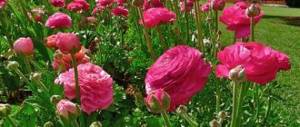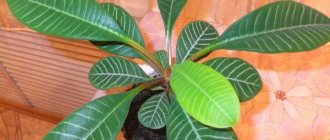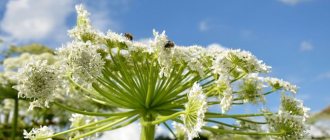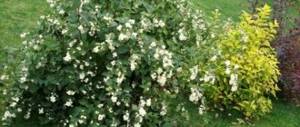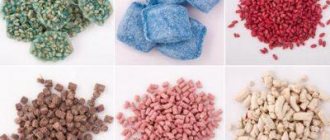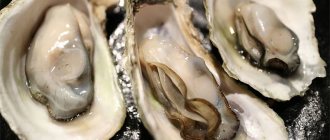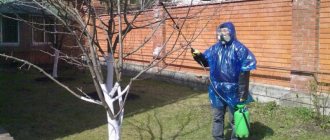Is oleander a poisonous bush or not? Care and cultivation at home, the properties of this plant and what treatment do they need for poisoning?
Oleander belongs to the Kurtaceae family and is a perennial shrub that grows well both indoors and outdoors. In our latitudes it can be found quite often. It grows very well and quickly, blooms beautifully, and can be of different colors: red, white, yellow, pink. But for all its livability and beauty, this plant is very poisonous.
It is worth noting that the poison is contained in all parts of the oleander: from flowers to roots. To get poisoned by it, you don’t have to eat it, just touch it and then accidentally put, say, a finger in your mouth or rub your eyes. Intoxication also occurs when the plant is in a small, unventilated room. The smell of oleander often causes headaches, nausea, and confusion.
Outside and inside
This is a very attractive plant with fragrant flowers, but it is not recommended to grow it indoors. It is much better to leave the giant for office hallways, where no one would think of breaking off a twig. Even if you don't have small children or pets, the fumes can be dangerous and cause headaches. Of course, a small plant in the living room is unlikely to do any harm, but if it is in a tiny bedroom that is rarely ventilated, then a negative effect on your body is quite possible.
What should you be afraid of?
Even the most dangerous plants can only have certain parts that are toxic. But that's not what oleander is like. Whether it is poisonous or not is better not to check in practice. All parts of the plant can cause poisoning. Even when dried, they retain toxins. Leaves and stems, fragrant flowers and roots, but especially dangerous is the fresh and dried juice that is released when cut. If it gets into the eyes, it leads to blindness, and vision cannot be restored. But the most harm will happen if the juice gets into the digestive tract. Even a tiny amount leads to the fact that a person can die without quality and timely help. This is the handsome oleander. Poisonous or not, now there is no doubt. And for the safety of curious kids, it is better to “evict” the plant to one of your friends.
Legend
There have been a lot of legends around oleander for a long time. According to one of them, even in ancient times, wives used it to get rid of unfaithful husbands. They simply added a couple of oleander flowers to their food and they fell asleep in eternal sleep. And according to another, the royal heirs poisoned their competitors with it, and this was not punished in any way, since this plant is not officially considered a poison. But no one still knows whether this is all true or not. One thing is clear: you can get very poisoned by this representative of the flora.
Origin
Where did the “pink laurel” come to us from? This shrub with leathery leaves, brownish stems and bright flowers came from Morocco. Most flower growers didn’t even know whether oleander was poisonous or not, but fell in love with the plant for its ease of cultivation. Its homeland is the western part of China, and it is also found in Portugal. Like many other African plants, it is not recommended to be used for growing in closed, small spaces, so that harmful fumes do not affect the health of household members.
Poisonous properties of oleander
Oleander contains substances such as glycosides, oleandrin and inerin. They are the ones who cause poisoning. When this plant, or more precisely its toxic substances, enters the human body, the following is observed:
- Nausea and vomiting;
- Slow heartbeat, shortness of breath;
- Confused consciousness, delirium;
- Deterioration of vision and hearing;
- Headache.
Oleander poisoning is especially difficult for children, since they often eat part of the plant. But their immune system, like their digestive system, is not yet fully formed.
If there is even the slightest suspicion of poisoning by this flower, then you should immediately call a doctor and provide first aid to the patient.
Why "pink laurel"
In fact, it is a completely different plant, but has similar features to laurel. Its brown stems are strewn with the same dark green, leathery, pointed leaves. In nature, it grows twice as tall as a person. At home, it does not exceed two meters, but only if you provide good lighting, a large pot and fertilizing. Therefore, it is recommended to install it in spacious halls and lobbies with good lighting. Poisonous plant or not, oleander is so beloved by gardeners that no one is going to give it up.
Intoxicating aroma
Common oleander (Nerium oleander) is a houseplant, a relative of the wild oleander (Nerium). It is known for its beauty and another feature. If you inhale its aroma for a long time, you may get a headache. This is a real weapon against depression, windows tightly closed since winter. As soon as the sunny day increases, it blooms and makes you forget about the cold.
Oleander has an extraordinary aroma, which sometimes even seems overly strong. However, when grown on your own plot, this will only add additional zest.
Common oleander is expressive. It will look great, delight passers-by with lush blooms and a subtle pleasant aroma if you place it outside the balcony. You can decorate your porch or flowerbed with it. Sometimes excess flower ovaries are simply cut off, thereby “taming” the destructive force contained in it. It should also be taken into account that in fact, the oleander may soon turn into a real indoor tree.
Decorative flowering shrub
Beautiful, fragrant corollas are collected in carpal inflorescences. They can be simple or terry. Today there are quite a few varieties, so the shoot you purchase may please you with yellow or red, pink or white panicles. Of course, the double oleander can be considered the most beautiful. Whether the plant is poisonous or not is now known for certain. Toxic sap makes all parts of it dangerous. Therefore, you need to care for it very carefully. Even an experienced gardener must take certain precautions and wear gloves and a mask when interacting with a plant.
But there are also positive aspects. In addition to its decorative function, oleander also purifies the air very well. This means that the room in which he settled will have much less waste and toxins.
Plant varieties
The poisonous oleander flower is:
- Ordinary.
- Indian.
- Fragrant.
But that is not all. In turn, the common oleander has many varieties. Hybrids are especially good. Their flowers reach enormous sizes, are lush, monochromatic and variegated.
Indian oleander cannot boast of such a variety of shapes and colors, but this does not lose its attractiveness. But it blooms from June to October with large and very fragrant flowers. They can be yellow, red, pink or white.
Description
Oleander reaches 3-5 m in height when grown in the garden and up to 2 m in indoor conditions. The color of the bark is light gray, and the foliage is whorled, dark green. The flowers are from 3 to 5 cm in diameter, the inflorescences are semi-umbrella-shaped in white, pink, dark red or beige. There are terry varieties. The most common type is common oleander. Other representatives include fragrant, pink, Indian, white and pink.
Oleander is a fairly large evergreen shrub with highly branched stems of a brownish color, so keeping it indoors can sometimes be quite problematic. The foliage is narrow, lanceolate or linear-lanceolate, entire or indistinctly crenate type. The leaves are located on shortened petioles. The foliage is bare, leathery, with a lightened central vein. Leaves are oppositely arranged.
The flowers are large, bright, five-membered, collected in corymbose inflorescences, which are located on the apical part of the shoots. The corolla is characterized by a variety of colors, but most often there are specimens with white and pink petals. Relatively rare are species with red and yellow or yellowish flowers.
Oleander is a genus of plants in the Kutrovaceae family, which, however, consists of only one species - the common oleander, whose name in common parlance is often shortened to just the first word. In the wild, this shrub, which often takes the form of a small tree, grows in many subtropical regions of the Old World - from Portugal to Southeast China, including in the subtropical parts of the Black Sea coast. The favorite places for oleander to grow are river beds that dry up during the dry season.
As befits a subtropical guest, oleander is an evergreen plant. In tree form, the growth of such a shrub can reach 4 meters; in a tub it usually does not grow above a height of two meters. Its stems are densely branched, their color is slightly brownish. The leaves have a narrowed lanceolate shape; with a width of about 3 cm, they can grow 10-15 cm in length.
One of the main reasons for the widespread cultivation of oleander is its double flower, which has excellent decorative qualities, although doubleness is more characteristic of specially bred varieties rather than wild shrubs. The wild tree usually blooms white or pink; thanks to the work of breeders, there are varieties with emphatically red or even yellow flowers.
Height. The shrub can reach 6 meters in height in its natural environment; in indoor cultivation it rarely exceeds 1.80 m and is well regulated by pruning.
Growing and care
Pink laurel is an unpretentious plant that even a novice gardener can grow. When choosing room decor, it is important to know in advance whether oleander is poisonous. If there are cats in the house, then you need to take into account their passion for tasting plants. Saving the animal in this case will be quite difficult.
In order for an oleander to grow and develop well, it really needs lighting. If the pot is located at the back of the room, then artificial light will do. South-east windows are best suited for placement. For lush and abundant flowering, it is recommended to take the pot out onto the loggia in the summer. At the same time, do not forget to protect the plant from precipitation and direct sunlight. Daylight must last at least eight hours, otherwise the buds will not form.
Conditions
Indoor oleander is poisonous, but this does not prevent it from remaining the most favorite plant among thousands of gardeners. In order for it to grow truly beautiful, you need to find suitable conditions for it. Pink laurel loves moist air, stable temperatures and nutritious soil. You should not ignore these requirements, because otherwise the plant will not bloom. So, when leaving, you must comply with the following conditions:
- The air temperature in the summer should not be lower than 23 degrees.
- With the onset of winter, it is important to lower it to 10 degrees and ensure a period of rest.
- The plant requires abundant watering. Therefore, immediately after the top layer of soil dries, it is necessary to moisten it.
- But with the onset of autumn, you can safely reduce watering. Monitor the condition of the soil, usually twice a week is enough.
- The water must be defended. Don't neglect this rule.
- The soil should not become acidified, so first of all you need to provide the pot with good drainage and loose soil, and secondly, do not overwater it.
- Oleander does not like dry air, so in hot weather it is necessary to spray the plant.
- In early spring and summer it needs feeding. Choose any option for decorative flowering plants.
Useful properties of a decorative flower
Oleander is a poisonous shrub, but it is known that in microdoses toxic substances produce a healing effect.
Oleanrin - an extract from the plant is used in:
- cardiology,
- veterinary and
- as a remedy in folk medicine.
This substance was included in the composition of cornerin and neriolin .
Tinctures and lotions are made from oleander. They treat:
- migraine, insomnia, neuroses,
- tachycardia,
- skin diseases, for example, furunculosis and lichen.
To eliminate acute heart failure in pets and animals, in order to activate their intestinal motility, veterinarians use an alcohol extract from the foliage of a bush in a dosage appropriate to the weight of the animal.
The appearance of the oleander is impressive, so it is widely used by landscape designers, including in group plantings and tapeworms.
Open terraces, balconies, loggias, and winter gardens are decorated with oleander. Since the 17th century in Europe, it has been customary to decorate the interior of a home with this shrub, and nowadays - office premises.
Since blooming oleander creates the illusion that summer is continuing, growing the plant at home can help combat the seasonal blues.
Buy an oleander, place it at home, and with proper care you will be able to get a luxurious living decoration for your interior.
Replanting and pruning
Do not forget that this is not a harmless chlorophytum, but an oleander. The toxic properties of the plant must be taken into account in any interaction with it, be it replanting or pruning. Gloves and a mask are required, and after finishing work, all tools must be rinsed, clothes washed, and hands washed with soap. And don't let children near him.
However, the plant will still have to be replanted. To do this, you need to prepare a nutrient substrate, which may consist of garden soil, manure and peat. Young oleanders are replanted as they grow out of the pot, sometimes several times a year. In order for the plant to bloom well, it is necessary to cut all branches exactly in half immediately after flowering. This will make room for new growth, and the bush below will not become bare.
Possible consequences of negligence
According to doctors, even one leaf of the plant can lead to tragedy. In Israel, he once almost caused the death of six girls. Expecting the leaves to have a narcotic effect, they chewed a small piece. The girls were found on time and taken to intensive care. They did not know that oleander is a poisonous plant. Treatment for poisoning is symptomatic, but first of all you need to remove toxins from the body.
If any part of the plant is ingested, rapid deterioration of the condition, slowing of the heartbeat, bloody diarrhea, loss of consciousness, and cessation of breathing are observed. But the beauty of its flowers is so attractive that no one will refuse to have such a plant at home. The exception is if children, kittens or puppies live in the same territory. They are all too curious.
Use in folk medicine
The medical heart drug “Neriolin” was made from the extract of the leaves, but due to severe side effects it was discontinued. But in homeopathy, no one disputes the benefits of oleander in the treatment of certain ailments.
For extraction, healers use only fresh leaves: dried raw materials lose some of the valuable components and are used extremely rarely. Treatment begins with microdoses, the course and dosage regimen are carefully calculated, so it is unwise to prescribe medications on your own. Decoctions, water and alcohol infusions and extracts from fresh leaves are prescribed for:
- Treatment of headaches, muscle pain, nephritis.
- Treatment of heart failure, myocarditis, angina pectoris, some forms of congenital heart defects.
- Slowing down the frequency and increasing the amplitude of heart contractions.
- Relief from diarrhea, bloating, flatulence.
- Stimulating myocardial function.
- External compresses for gout.
- Treatment of nervous exhaustion. Insomnia and nervous exhaustion can also be cured with a decoction of dandelion roots.
- Complex treatment of thrush (oral intake and douching).
Cream is prepared from fresh flowers. For this purpose, freshly picked and barely blossomed buds are used. They are thoroughly ground in a stone or marble mortar and mixed with Vaseline in a ratio of 3:5. The resulting mixture is heated in the microwave until liquid (but not boiling) and cooled, stirring constantly.
The resulting cream is used to lubricate boils for their rapid maturation, dermatitis, weeping eczema (especially on the head), areas of skin affected by fungus, and insect bites. This mixture can be stored in the refrigerator for no longer than a month. For inflammatory processes on the skin (rash, itching, acne), it is recommended to apply a pulp of affordable and healthy, and, most importantly, harmless cucumber.
Possible problems during cultivation
Despite all its unpretentiousness, it is quite easy to destroy a flower. Therefore, let's devote a few words to the most common problems that flower growers regularly face.
- Situation number one – the leaves dry out. Most likely, it lacks moisture or the air is too dry.
- The plant sheds its leaves. The reason for this may be low room temperature. Therefore, even in summer you need to keep an eye on it, and on cold nights it is better to bring the flower indoors.
- Yellow spots on the leaves indicate improper fertilization or excessive watering.
- Lack of flowering most often indicates a lack of light. Oleander can shed buds after watering with cold water or at low indoor temperatures.
- Black dots on the leaves indicate that the plant is affected by fungal diseases.
- White accumulations are thrips, spider mites and other pests. It is necessary to use special insecticides.
Disease and pest control
Despite all its unpretentiousness, it is quite easy to destroy a flower. Therefore, let's devote a few words to the most common problems that flower growers regularly face.
As often happens, any problems with oleander, be it diseases or pests, would never have appeared if gardeners had always followed the rules of caring for the plant. Of course, pathogens of major diseases and other uninvited guests can attack a completely healthy and well-groomed flower, but this happens quite rarely. However, even if something bad has already happened, you need to try to save the tree, and to do this, it is first advisable to determine what the problem is.
- The foliage dries and withers. This is a typical sign of a lack of moisture, so you need to intensify watering or spraying, or, as an option, increase the air humidity in the room.
- Leaves fall . Most plants shed their leaves in fairly low temperatures; this statement also applies to the evergreen oleander, although for it such behavior is not the norm at all. In winter, while the bush is growing indoors, it is usually not in danger of hypothermia, but on a summer night, if it is taken outside, it may freeze. Because of this, gardeners usually advise, even in summer, to take the oleander outside only during the day, taking it back indoors at night.
- The leaves are turning yellow. There can be two reasons for this phenomenon: firstly, too intensive watering and potential root rotting, and secondly, ill-considered application of fertilizing.
- The tree doesn't bloom. A disaster for all oleander flower lovers can be caused by any of a number of reasons. So, for proper budding, you need a lot of light and access to fresh air, and indoors these requirements are not always met. For all its heat-loving nature, an adult oleander does not like extreme heat and may also not bloom because of it. Finally, it is possible that the plant has simply outgrown its tub - then it just needs to be transplanted into a larger container.
- The buds are falling. This is another sign that the tropical guest is cold. In this case, the problem may relate to both low air temperature and watering with too cold water.
- Black spots on the leaves and further weakening of the bush. Such symptoms clearly indicate that the oleander foliage is occupied by a fungus. Over time, fungal spots can increase, but they block the green mass from accessing sunlight, which is why photosynthesis loses its efficiency. The affected leaves cannot be saved, so they are removed; the rest of the plant should be treated with fungicides.
- Whitish and brown clusters on foliage. Similar traces are left behind by almost all oleander pests - thrips and mealybugs, spider mites (which also leave cobwebs) and scale insects. By carefully examining the leaves, you will find not only traces of these uninvited guests, but also them themselves. In mild cases, fighting them is possible even with ordinary soapy water, but if there are an abundance of enemies, you will have to treat the plant with insecticides, and perhaps more than once. In addition, some pests are able to hide or lay eggs even in adjacent areas of the soil, so sometimes not only the oleander itself, but also the soil in the tub must be treated.
- Growths on the trunk and branches , as well as white spots on the foliage. Such phenomena are typical for severe bush diseases - cancer or bacteriosis.
Multifunctional shovel with 25 useful functions
The Brandcamp shovel is an indispensable tool for hunters, fishermen, summer residents, tourists, lovers of extreme sports and outdoor activities. A great gift for any man!
Read more…
Plant propagation
Even beginners do not have any problems with this. There are three effective methods, from which you can choose the one you like best:
- During pruning, there are always cuttings left that are capable of rooting. The cut area must be treated with charcoal powder and placed in a mixture of sand, perlite and charcoal. In about a month, with good lighting and regular watering, they will sprout roots.
- Air layering. Another great way to get new plants. In this case, you need to cut a branch, remove the bark from it and lower this place into damp sand or a bag of water. After the roots appear, you can cut the branch and plant it in the mixture prepared for it.
- Propagation by seeds. This is a rather problematic method because they have low germination rates. Before planting, the material is soaked in a weak solution of potassium permanganate and kept in Zircon, this gives a chance of success.
Contraindications to the use of oleander
It is prohibited to treat yourself with infusions, ointments and other preparations based on oleander; you should always consult a professional. If you take excessive amounts of oleander preparations, your heart may stop. Even one leaf of a flower is dangerous and can lead to death. In case of an overdose, the head begins to spin, the pupils dilate, and cold sweat appears. It also provokes gag reflexes, diarrhea with bloody discharge, mental disorders or coma. If signs of overdose appear, you must immediately call an ambulance, drink potassium permanganate and activated carbon.
Pregnant women, breastfeeding women and children should not take medicinal substances based on leaves, flowers or other parts of oleander. Remember that this plant can kill not only humans, but also other living beings. If you examine the plant, you will notice dead insects on it. Take care of yourself and the environment around you!
Join our Facebook group
